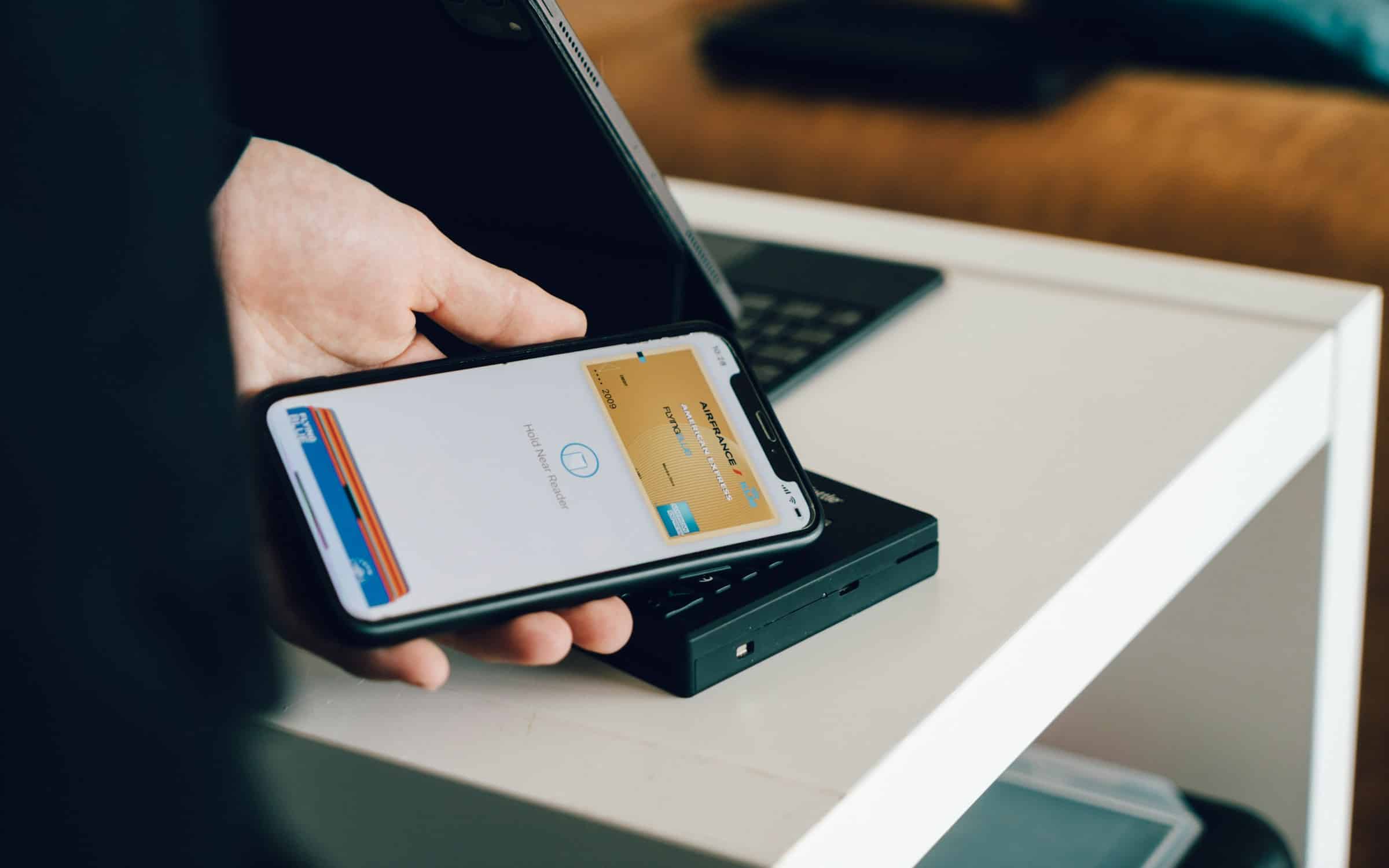How to Use Your Smartphone for Secure Digital Payments?

In today's digital age, smartphones have become an indispensable part of our lives. We use them for everything from communication to entertainment, and now, increasingly, for financial transactions. The convenience of making payments with your smartphone is undeniable, but it also comes with its own set of risks. In this article, we will provide a comprehensive guide on how to use your smartphone for secure digital payments. Follow these guidelines to protect your financial information and enjoy the benefits of mobile payments without compromising your security.
The Rise of Mobile Payments
Mobile payments have seen exponential growth over the last few years, fueled by advancements in smartphone technology and the increasing availability of digital payment platforms. The convenience of being able to pay for goods and services with just a tap of your phone has made mobile payments a popular choice for consumers around the world.
Dans le meme genre : What Are the Best Practices for Using Your Smartphone as a Mobile Wallet?
Mobile payment technologies, such as Near Field Communication (NFC) and QR codes, have revolutionized the way we conduct transactions. These technologies allow users to make secure payments by simply tapping their phone or scanning a code, eliminating the need for physical cash or credit cards. Major players in the industry, such as Apple Pay, Google Pay, and Samsung Pay, have further driven the adoption of mobile payments by offering user-friendly and secure platforms.
However, with the convenience of mobile payments comes the responsibility of ensuring that your financial information is secure. Cybercriminals are always on the lookout for vulnerabilities to exploit, and mobile payments are no exception. By following best practices and staying informed about the latest security measures, you can enjoy the benefits of mobile payments without compromising your financial security.
Avez-vous vu cela : Can You Use Your Smartphone to Control a Smart Garage Door Opener?
Choosing a Secure Mobile Payment Platform
Before you start using your smartphone for digital payments, it's essential to choose a secure mobile payment platform. With several options available, it's important to select one that prioritizes security and offers robust protection for your financial information.
Apple Pay, Google Pay, and Samsung Pay are among the most popular mobile payment platforms, each offering their own set of security features. Apple Pay, for example, uses a combination of tokenization and biometric authentication to ensure that your transactions are secure. Google Pay also employs tokenization, along with encryption and two-step verification, to protect your data. Samsung Pay adds an extra layer of security with its Knox platform, which offers real-time protection against malware and other threats.
When choosing a mobile payment platform, it's important to consider the security features it offers. Look for platforms that use tokenization, which replaces your card information with a unique token for each transaction, making it more difficult for hackers to access your data. Biometric authentication, such as fingerprint or facial recognition, adds another layer of security by ensuring that only you can authorize transactions. Additionally, encryption and two-step verification can further protect your financial information.
It's also important to keep your mobile payment app updated to ensure that you have the latest security features and protections. Regular updates often include patches for vulnerabilities and enhancements to security protocols, making it more difficult for cybercriminals to exploit your data.
Securing Your Smartphone
Your smartphone is the gateway to your digital payment accounts, so it's essential to ensure that it's well-secured. Taking a few simple steps to protect your device can go a long way in safeguarding your financial information.
First and foremost, always use a strong password or PIN to lock your smartphone. Avoid using easily guessable passwords, such as "1234" or "password," and opt for a combination of letters, numbers, and special characters. If your phone supports biometric authentication, such as fingerprint or facial recognition, enable these features for an added layer of security.
Keeping your smartphone's operating system and apps up to date is another crucial step in securing your device. Updates often include security patches that address known vulnerabilities, so it's important to install them as soon as they become available. Enable automatic updates if possible, to ensure that your device is always running the latest software.
Be cautious about downloading apps from unknown sources, as they may contain malware or other security threats. Stick to official app stores, such as the Apple App Store or Google Play Store, and read reviews and ratings before downloading any app. Additionally, consider installing reputable antivirus software on your smartphone to protect against malware and other threats.
It's also a good idea to enable remote tracking and wiping features on your smartphone. In the event that your device is lost or stolen, these features allow you to locate your phone and remotely erase all of its data, preventing unauthorized access to your financial information.
Finally, be mindful of the networks you connect to when using your smartphone for digital payments. Avoid using public Wi-Fi networks for financial transactions, as they can be more susceptible to hacking. Instead, use a secure, private Wi-Fi network or your mobile data connection.
Best Practices for Mobile Payments
Using your smartphone for digital payments can be safe and convenient if you follow best practices to protect your financial information. By taking a proactive approach to security, you can minimize the risk of fraud and enjoy the benefits of mobile payments with peace of mind.
One of the most important best practices is to enable two-factor authentication (2FA) for your mobile payment accounts. 2FA provides an additional layer of security by requiring a second form of verification, such as a code sent to your phone or a biometric scan, in addition to your password. This makes it much more difficult for cybercriminals to access your accounts even if they manage to obtain your password.
Regularly monitoring your financial accounts for suspicious activity is another crucial best practice. Set up alerts for transactions, so you can quickly identify any unauthorized activity and take action. If you notice any suspicious transactions, contact your bank or payment provider immediately to report the activity and secure your account.
Be cautious about sharing your financial information, even with trusted individuals. Cybercriminals often use social engineering tactics to trick people into revealing their account details. Always verify the identity of the person or organization requesting your information and be wary of unsolicited requests for financial details.
When making payments, especially online, ensure that the website or app you are using is secure. Look for the padlock icon in the address bar and ensure that the URL begins with "https://" rather than "http://". This indicates that the website uses encryption to protect your data.
Consider using virtual cards for online transactions. Many banks and payment providers offer virtual cards, which are temporary card numbers that can be used for a single transaction or a limited period. This adds an extra layer of security by keeping your actual card number hidden.
Finally, educate yourself about the latest security threats and stay informed about new security features and best practices. Cybersecurity is an ever-evolving field, and staying informed can help you protect your financial information from emerging threats.
The Future of Secure Mobile Payments
As technology continues to advance, the future of secure mobile payments looks promising. Innovations in payment technology and security protocols are paving the way for even more secure and convenient digital payment solutions.
One of the most exciting developments in this space is the rise of blockchain technology. Blockchain offers a decentralized and tamper-proof ledger for recording transactions, making it an attractive option for secure digital payments. By eliminating the need for intermediaries and providing a transparent and immutable record of transactions, blockchain has the potential to significantly enhance the security of mobile payments.
Another promising development is the use of artificial intelligence (AI) and machine learning to detect and prevent fraud. AI-powered systems can analyze vast amounts of data in real-time to identify patterns and anomalies that may indicate fraudulent activity. By continuously learning and adapting to new threats, these systems can provide robust protection against cybercriminals.
Biometric authentication is also expected to play a significant role in the future of secure mobile payments. Advances in biometric technology, such as facial recognition and fingerprint scanning, are making it easier and more secure to authenticate users. These technologies offer a convenient and reliable way to ensure that only authorized users can access mobile payment accounts.
The integration of Internet of Things (IoT) devices with mobile payment platforms is another trend to watch. IoT devices, such as smartwatches and connected home appliances, are increasingly being used for digital payments. Ensuring the security of these devices and their integration with mobile payment platforms is critical to maintaining the overall security of the payment ecosystem.
As the mobile payment landscape continues to evolve, it's essential for users to stay informed about the latest security trends and best practices. By staying vigilant and adopting new security measures as they become available, you can continue to enjoy the benefits of mobile payments without compromising your financial security.
Using your smartphone for secure digital payments is not only convenient but can also be safe if you take the necessary precautions. By choosing a secure mobile payment platform, securing your smartphone, following best practices for mobile payments, and staying informed about the latest security trends, you can protect your financial information and enjoy the benefits of mobile payments with confidence.
As technology continues to advance, the future of secure mobile payments looks bright. Innovations such as blockchain, AI-powered fraud detection, biometric authentication, and IoT integration are set to enhance the security and convenience of mobile payments even further. By staying proactive and vigilant, you can leverage these advancements to make secure digital payments a seamless part of your everyday life.
